To put it simply -- Hawaii is unique. Eight islands sit right in the middle of the Pacific Ocean’s ring of fire, and these are the most isolated islands in the world. Long before humans arrived hundreds of years ago, there were only a handful of endemic plants and animals, including the monk seals that you see lounging on the beaches today. Otherwise, these islands were fairly barren.
Nearly all that you see on the islands -- plants, animals, and people -- have been shipped in from other parts of the world. Some of these introduced species are welcomed, like the coconut-giving palm trees that the original Polynesian settlers brought with them centuries ago. And some of these species are decidedly unwelcome, like the overpopulation of mongoose; the very animal that farmers brought in to eradicate vermin. Now, they are vermin themselves.
And Hawaii is a quirky cultural mashup of Native, Asian, Portuguese and American cultures. You’ll find strange collisions of cuisine on the islands, like taco rice, loco moco, and box lunches. And if you look hard enough, you can even find authentic cowboys roaming the fields of The Big Island. So, it’s fitting that such a unique place keeps such odd secrets.
1 Astronauts Used to Train on The Big Island
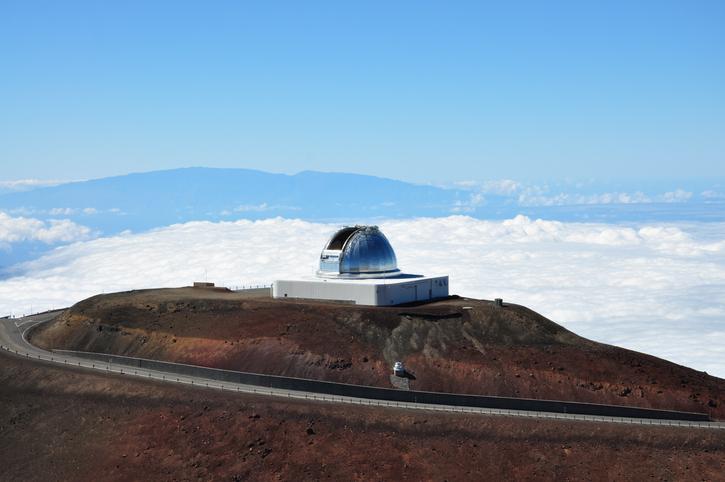 The Big Island is one of the strangest places on earth. There are two giant volcanoes that cut the island in two -- Mauna Kea and Mauna Loa -- and the west and east sides have palpably different climates. The massive mountains keep the west side of the island, anchored by the city of Kona, hot and dry like a desert. The east side, where you’ll find the city of Hilo, is a wet jungle with rivers and waterfalls.
The Big Island is one of the strangest places on earth. There are two giant volcanoes that cut the island in two -- Mauna Kea and Mauna Loa -- and the west and east sides have palpably different climates. The massive mountains keep the west side of the island, anchored by the city of Kona, hot and dry like a desert. The east side, where you’ll find the city of Hilo, is a wet jungle with rivers and waterfalls.
And tumbling down from the long, slow slopes of the 13,000-foot Mauna Loa, which is one of the biggest volcanoes on earth, is a craggy field of glassy volcanic rock. Astronauts would come to the Big Island to train for a landing on the moon on the moonscape of Hawaii.
2 Hawaii Continues to Grow
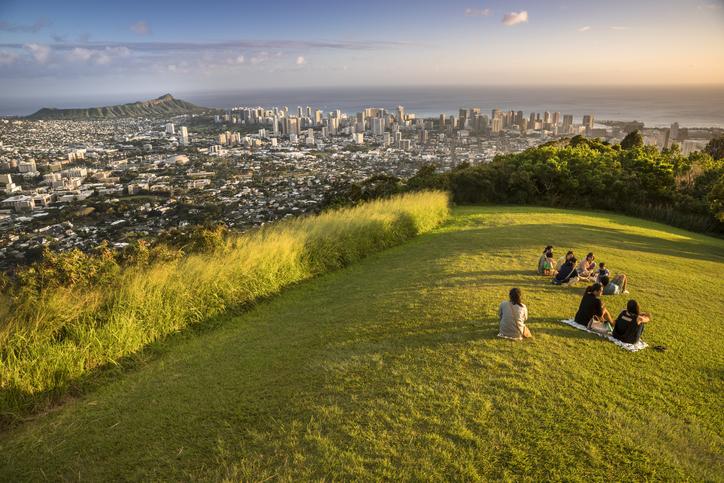 Hawaii is the story of life and death. Each of the islands was created by a fiery volcano that burst through the floor of the Pacific Ocean, but most of those volcanoes have gone out. That means Kauai, Oahu, Molokai, Lanai, Niihau, and Kahoolawe are all sinking back into the ocean. Each and every blast of wind, a drop of rain and wave that crashes on the shores of these islands are eroding its earth. Soon, at least in geological time, the islands will vanish beneath the waves. And you can see the very top of a sunken Hawaiian island at Maui’s Molokini Crater.
Hawaii is the story of life and death. Each of the islands was created by a fiery volcano that burst through the floor of the Pacific Ocean, but most of those volcanoes have gone out. That means Kauai, Oahu, Molokai, Lanai, Niihau, and Kahoolawe are all sinking back into the ocean. Each and every blast of wind, a drop of rain and wave that crashes on the shores of these islands are eroding its earth. Soon, at least in geological time, the islands will vanish beneath the waves. And you can see the very top of a sunken Hawaiian island at Maui’s Molokini Crater.
Maui and the Big Island are still alive. The Big Island is home to five of Hawaii’s six still-active volcanoes while Maui has the monstrous Haleakala. Maui’s towering volcano has not erupted for centuries, but The Big Island’s Kilauea volcano has been constantly erupting for almost 30 years. It pours its lava into the Pacific Ocean in the Lower East Rift Zone. The lava cools, shoots a toxic plume of ash and glass into the sky, and this process grows the Big Island by about 40 acres per year.
3 The Big Island Might Be A Threat To The Mainland USA
 The Big Island is constantly pouring lava into the Pacific Ocean off of its southeast Rift Zone, but the lava doesn’t simply pile up at the bottom of the ocean to create new land. Instead, it is forming a sort of shelf that is extending out into the ocean. This is called the Hilina Slump.
The Big Island is constantly pouring lava into the Pacific Ocean off of its southeast Rift Zone, but the lava doesn’t simply pile up at the bottom of the ocean to create new land. Instead, it is forming a sort of shelf that is extending out into the ocean. This is called the Hilina Slump.
Some alarmist experts say that the slump could suddenly break off into the ocean, and they say this could cause a massive tsunami to sweep across the Pacific. It can get up to hundreds of miles per hour to devastate cities like San Francisco or Los Angeles.
4 Hawaii Is The Only State That Grows Coffee
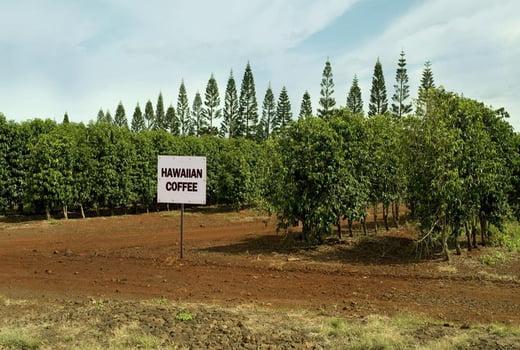 Coffee lovers flock to the islands to sample Hawaii’s decadent Kona Coffee. You might think that Kona Coffee only grows near Kona on the Big Island, but it actually grows on other islands, as well. Kona translates to leeward which is a sailing term for the side of an island least likely to see a storm. And on Hawaii, that means the hot and dry side of an island.
Coffee lovers flock to the islands to sample Hawaii’s decadent Kona Coffee. You might think that Kona Coffee only grows near Kona on the Big Island, but it actually grows on other islands, as well. Kona translates to leeward which is a sailing term for the side of an island least likely to see a storm. And on Hawaii, that means the hot and dry side of an island.
Each island has a central volcano that dictates the climate on each side of the island. The mountain gathers clouds and deflects wind, and this forces moisture to one side of the island while keeping another side clear. Take Kauai, for example. The small island’s Kona side is the west side where you’ll find Kona Coffee fields. So, it seems that Kona coffee likes to be on the hot and dry side of an island.
5 More Species Have Gone Extinct In Hawaii Than Any Other State
This fact is impressive because nearly everything you see -- plants, people and animals -- has been imported from other parts of the world. But the hot and humid year-round temperatures of Hawaii allow life to flourish; sometimes for the good, and sometimes for the bad. Unfortunately, all of Hawaii’s native bird species are endangered, and 70% of the native bird population has been wiped out.
6 Cowboys Roamed The Islands Long Before The Wild West Era On The Mainland
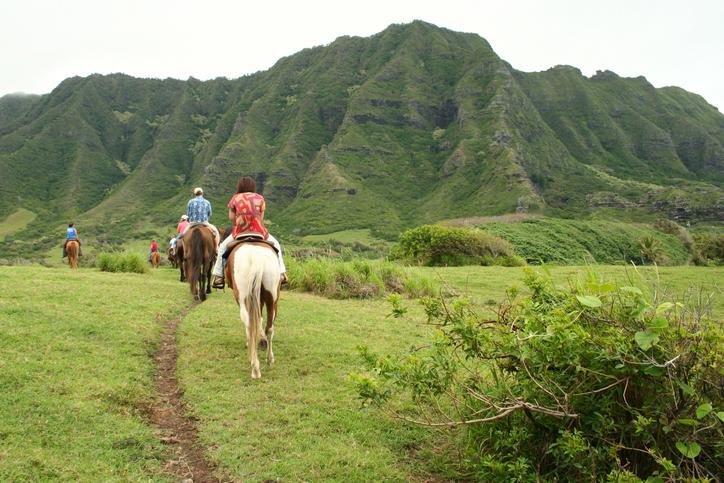 Back in the late 1700s, the British Royal Navy brought the King of Hawaii a gift -- livestock. The King did not know how to take care of these animals, so he did two things. First, he declared a Kapu. Anybody found harming the animals could be sentenced to death. Second, he sent for the best ranchers in the world -- Portuguese Cowboys.
Back in the late 1700s, the British Royal Navy brought the King of Hawaii a gift -- livestock. The King did not know how to take care of these animals, so he did two things. First, he declared a Kapu. Anybody found harming the animals could be sentenced to death. Second, he sent for the best ranchers in the world -- Portuguese Cowboys.
The European cattle rustlers answered his call, and they came to the islands to care for the cows and goats. The animals thrived, but the cowboys were homesick. They craved the food of their homeland. So, they brought with them the Malasada and the Portuguese sausage, and you can still order these authentic Portuguese dishes on the islands today.
7 Turning Down A Lei Is Considered Rude
 You might be greeted the second you step off your plane into the humid open-air airports of Hawaii, and the greeter may present you with a lei. Leis are important in Hawaiian culture. They used to symbolize status, but now they are mostly used for celebrations. And it is rude to refuse the flowery necklace if someone else presents it to you. In fact, it is rude to take the lei off so long as the presenter is in your presence. So, if you get laid at the airport or at a luau, make sure to keep the fragrant necklace on until you’re back at your hotel. And don’t worry, leis are for men, women, and children.
You might be greeted the second you step off your plane into the humid open-air airports of Hawaii, and the greeter may present you with a lei. Leis are important in Hawaiian culture. They used to symbolize status, but now they are mostly used for celebrations. And it is rude to refuse the flowery necklace if someone else presents it to you. In fact, it is rude to take the lei off so long as the presenter is in your presence. So, if you get laid at the airport or at a luau, make sure to keep the fragrant necklace on until you’re back at your hotel. And don’t worry, leis are for men, women, and children.
8 The Big Island Has Recorded Hawaii’s Highest And Lowest Temperatures
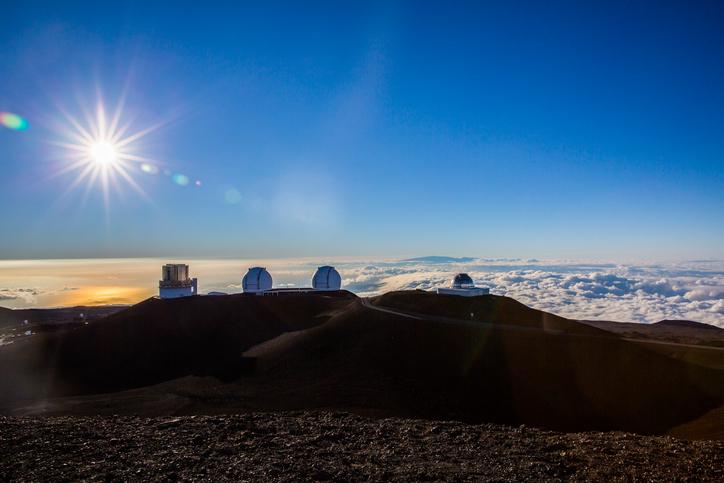 If you know anything about the Big Island, then this quirky fact doesn’t come as a surprise. The island is home to the two tallest mountains in the state -- Mauna Kea and Mauna Loa -- and you’ll find 10 of the world’s 14 different climate zones as you descend the mountains’ slopes. There is a jungle on the east side, dry desert climates on the west side and the mountains themselves become snow-capped during the dead of winter. In fact, Mauna Kea’s summit recorded Hawaii’s record low of 12 degrees. The lower altitude town of Pahala recorded Hawaii’s record high at 100.
If you know anything about the Big Island, then this quirky fact doesn’t come as a surprise. The island is home to the two tallest mountains in the state -- Mauna Kea and Mauna Loa -- and you’ll find 10 of the world’s 14 different climate zones as you descend the mountains’ slopes. There is a jungle on the east side, dry desert climates on the west side and the mountains themselves become snow-capped during the dead of winter. In fact, Mauna Kea’s summit recorded Hawaii’s record low of 12 degrees. The lower altitude town of Pahala recorded Hawaii’s record high at 100.
9 People of Asian Descent Make Up The Majority Of The Population
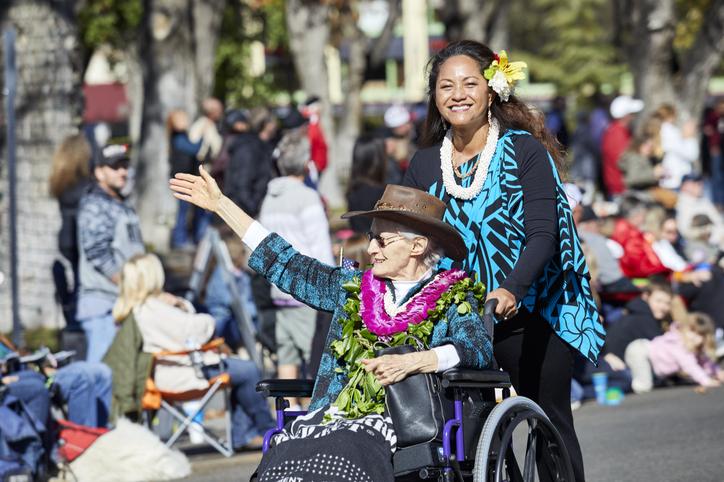 Caucasians make up the majority of the population in all but five states -- California, Texas, New Mexico, Nevada, and Hawaii. But Hawaii is the only state to never have had a Caucasian majority. And as it stands right now, people of Asian descent are the majority on the islands by a long shot.
Caucasians make up the majority of the population in all but five states -- California, Texas, New Mexico, Nevada, and Hawaii. But Hawaii is the only state to never have had a Caucasian majority. And as it stands right now, people of Asian descent are the majority on the islands by a long shot.
It breaks down like this. Asians make up about 38% of the population with Caucasians coming in a distant second at 25%. Unfortunately, the Hawaiian Native population makes up only about 10%.
10 No Snakes On The Islands. It’s Illegal!
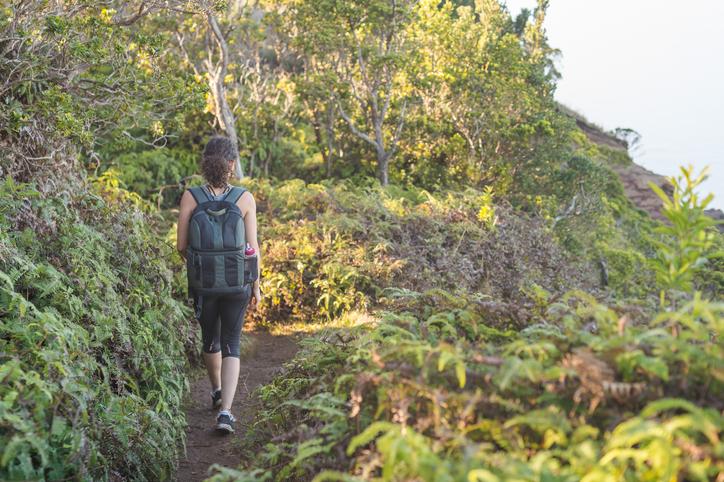 You might be shocked by a few things during your flight out to the islands. First of all, you’ll have to fill out a declarations card as if you were flying to another country. But you’re not flying to another country. You are flying to America’s 50th state, and no other state in the union requires a declarations card.
You might be shocked by a few things during your flight out to the islands. First of all, you’ll have to fill out a declarations card as if you were flying to another country. But you’re not flying to another country. You are flying to America’s 50th state, and no other state in the union requires a declarations card.
Second, you’ll be subject to additional bag screening when you land in Hawaii. Again, it feels very much like you are entering another country, but, of course, you aren’t. But these declarations cards and screenings are an attempt to keep contraband off the islands, such as guns (Hawaii has very strict gun laws and low gun violence), drugs and certain animals such as snakes.
Like you’ve already read in this article: Nearly everything in Hawaii has been imported from somewhere else in the world, and Hawaii’s climate is a recipe for life. Most species thrive here. So, the residents and authorities of Hawaii simply don’t want to deal with snakes. They don’t want to worry about them during hikes, disrupting other species or invading their homes. And there’s a simple solution to this very reasonable concern -- make snakes illegal.
11 Alaska Is The Widest State. Hawaii Is Second
If you were asked to come up with the widest states in America, you might throw out Texas or Pennsylvania. But you’d be wrong. It turns out America’s two non-continental states are the widest in the land.
12 Billboards Are Illegal
Hawaiians obviously care about their Ohana; they care about their homeland. They want to be able to see the beauty that the islands have to offer, so they’ve outlawed billboard advertisements across the state. That’s lucky for you. You can now get uninterrupted views of the islands’ sweeping coastlines without a Vegas-like light-up billboard obscuring your vision.
Interestingly enough, three other states have done the same -- Alaska, Vermont, and Maine -- and these are all some of the most beautiful states in the country.
13 Kauai Has Outlawed Cities
This one is a little misleading. Kauai hasn’t exactly outlawed cities, but they have outlawed the construction of buildings taller than a palm tree. That’s why you won’t see any skyline on the island of Kauai. In fact, it’s hard to find any area on the island that even resembles a city save for the industrial port side of Lihue.
14 Hawaii Has Outlawed Most Sunscreens
No, the state of Hawaii doesn’t want you to scorch your skin under the intense tropical sun, but they do want to protect their fragile coral reefs. Two chemicals often found in sunscreens -- oxybenzone and octinoxate -- actually degrade coral reefs. Hawaii can’t have that. The law doesn’t go into effect until January 1st, 2021, but you can show Hawaii a little Aloha by bringing coral-safe sunscreen for your big vacation.
15 Hawaii Is One Of Two States Not To Use Daylight Savings Time
In fact, Hawaii is unique in the fact that it has its own time zone, referred to as Hawaiian Standard Time. Daylight savings time can interrupt Hawaii’s long, beautiful days and it can make the sunset come undesirably early. So, Hawaii has joined the state of Arizona in not using Daylight Savings Time. Neither does American Samoa, Guam, Northern Mariana Islands, and Puerto Rico.
16 The Only State To Honor A King
America declared independence and fought a revolutionary war against the monarch of Britain centuries ago. The country now prides itself as being founded on the ideals of democracy, yet Hawaii still honors a king. The islands celebrate King Kamehameha Day. He’s the king who united the islands back in the early 1800s.
17 Less Than 8,000 People Live On Molokai
Molokai is a beautiful island, but there isn’t much tourist infrastructure for you to enjoy. In fact, there isn’t much infrastructure at all. That’s because only a handful of people live on a small island. You’d even be hard-pressed to find a stop sign. But, if this sounds like an amazingly relaxing getaway from the hustle and bustle, you’ll be welcomed on the island with Aloha.
18 Eddie Aikau Is The Coolest American Icon You’ve Never Heard Of
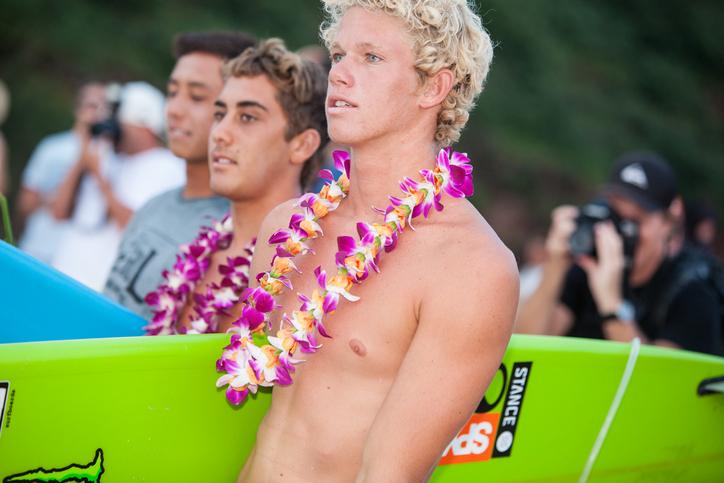 When you drive your rental car out of the airport on the islands, you might see bumper stickers that say, “Eddie Would Go.” Those stickers are referring to Eddie Aikau, the coolest American icon you’ve probably never heard of. The stickers are also alluding to his incredible courage in the face of danger.
When you drive your rental car out of the airport on the islands, you might see bumper stickers that say, “Eddie Would Go.” Those stickers are referring to Eddie Aikau, the coolest American icon you’ve probably never heard of. The stickers are also alluding to his incredible courage in the face of danger.
Now, let’s get something straight. Hawaii might seem like a foreign land, and the islands are a quarter the way around the world if you live on the east coast, but it’s the Aloha State; America’s 50th state. And Hawaiian history and culture in American history and culture.
Eddie Aikau was born just after World War II, and he was a legendary lifeguard on Oahu’s north shore. Some say he saved dozens of lives. He even dared to dive into the water when the odds seemed insurmountable. They even say that nobody drowned on Eddie’s watch.
Aikau was also one of the most daring surfers in the world. He would ride some of Oahu’s biggest waves to the delight of onlookers. His courage in the water earned him the saying, “Eddie would go.”
 He became a cult hero on the islands for his courage and his ability to bridge the gap between native and American cultures. This came to a head when the world surfing championships were founded on the north shore of Oahu. The native Hawaiians hated the fact that Americans were taking their time in the waves away from them. So, they founded a resistance, but Eddie was the one who made peace between the two fighting parties.
He became a cult hero on the islands for his courage and his ability to bridge the gap between native and American cultures. This came to a head when the world surfing championships were founded on the north shore of Oahu. The native Hawaiians hated the fact that Americans were taking their time in the waves away from them. So, they founded a resistance, but Eddie was the one who made peace between the two fighting parties.
In 1978, Aikau earned a spot on a traditional Polynesian outrigger sponsored by the Polynesian Voyaging Society. The boat was to sail the Pacific using only ancient technologies, but it sank just a few miles off the Hawaiian islands. Eddie decided he would take his surfboard to the back to the islands for help, and, just as he paddles over the horizon, the Coast Guard saved the crew of the vessel. But Eddie was never seen again.
The residents of the islands underwent the largest search and rescue operation in the state’s history for their beloved Eddie, and tales of his bravery live on today. In fact, there is a world-renowned surfing competition named in his honor and run by his ancestors. And it doesn’t take place on an annual basis. Instead, Eddie’s relatives wait for Oahu’s biggest waves before calling the best surfers in the world to the competition. The waves need to be as big as Eddie.
19 Surfing And Boogie Boarding Were Invented In Hawaii
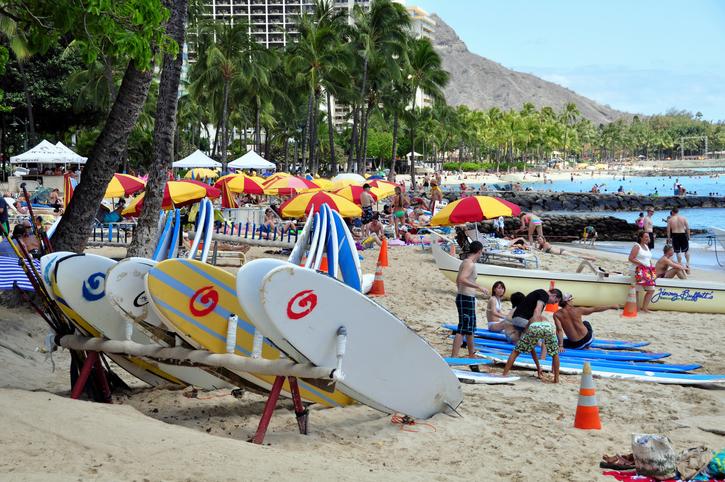 The ancient Hawaiians have been hanging ten for centuries, but the sport of surfing wasn’t revealed to the world until the early 20th century. And the ancient Hawaiians didn’t make it easy on themselves. They surfed massive board made entirely out of heavy woods. It was an athletic feat. Of course, the boards today are made of lightweight composite materials and they are machine-made. It makes hanging ten a lot easier.
The ancient Hawaiians have been hanging ten for centuries, but the sport of surfing wasn’t revealed to the world until the early 20th century. And the ancient Hawaiians didn’t make it easy on themselves. They surfed massive board made entirely out of heavy woods. It was an athletic feat. Of course, the boards today are made of lightweight composite materials and they are machine-made. It makes hanging ten a lot easier.
The ancient Hawaiians also used to boogie board using palm fronds, but the sport of boogie boarding wasn’t made popular until the early 1970s. That’s when a California transplant to the islands named Tommy Morey put the first modern boogie board in the water. He also used lightweight composite materials, and the 40-inch board was an instant hit. He then trademarked the name Morey Boogie in the mid-’70s, and he was cranking out tens of thousands of boards by the 1980s.
20 The Duke Is The Greatest American Sports Icon You’ve Probably Never Hear Of
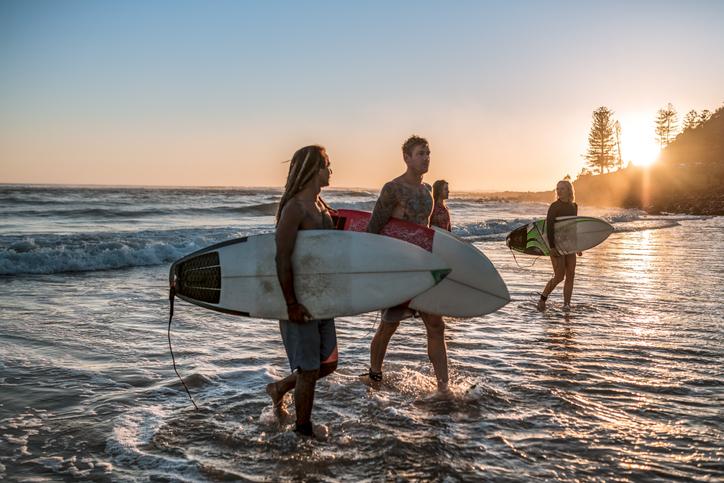 Duke Kahanamoku was born at the turn of the 20th century. He is credited with reviving surfing in Hawaii after missionaries outlawed the sport for being immoral. And the man swam in the Olympics for the United States long before Hawaii officially became a state.
Duke Kahanamoku was born at the turn of the 20th century. He is credited with reviving surfing in Hawaii after missionaries outlawed the sport for being immoral. And the man swam in the Olympics for the United States long before Hawaii officially became a state.
He took home the gold for the Red, White, and Blue on multiple occasions, and he became so popular they joined a worldwide swimming exhibition tour. Crowds gathered in all corners of the planet to watch the Duke swim, but he had ulterior motives. He packed his board and he planned on showing everyone the sport of surfing.
Surfing caught on like wildfire, and now it’s one of the world’s most popular sports. And it’s all thanks to the Duke. Fortunately, the Duke lived long enough to see Hawaii become a state, and he lived the rest of his life on the island of Oahu where he became a popular sheriff. He also starred in a few movies along the way.
There are two statues of the Duke on the Hawaiian islands. You’ll find them in front of The Duke’s restaurants on the islands of Kauai and Oahu. The restaurants also have a few locations in California, as well. And you’ll find celebratory statues to the Duke as far away as New Zealand. He is celebrated at surfing spots all over the planet.